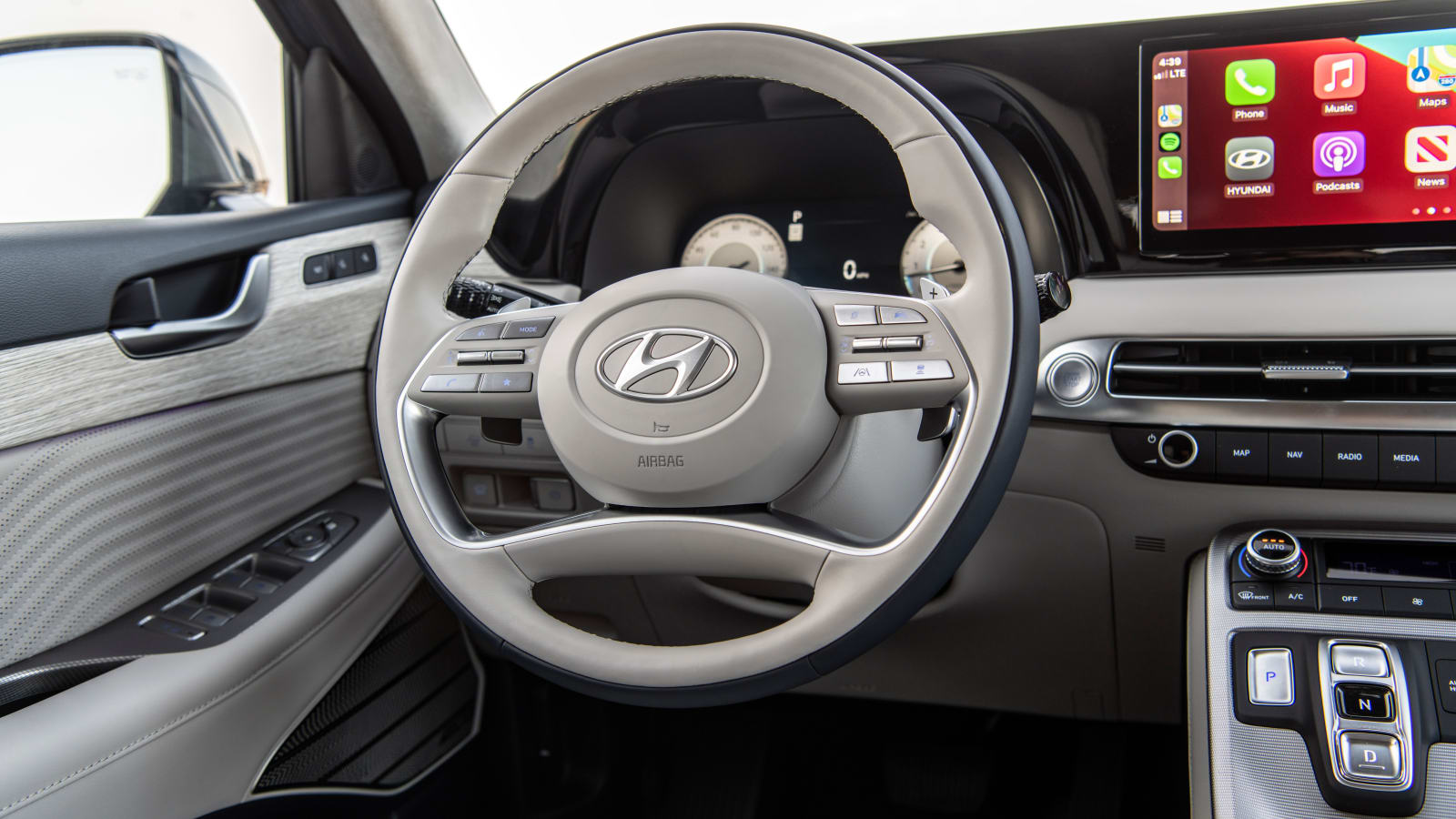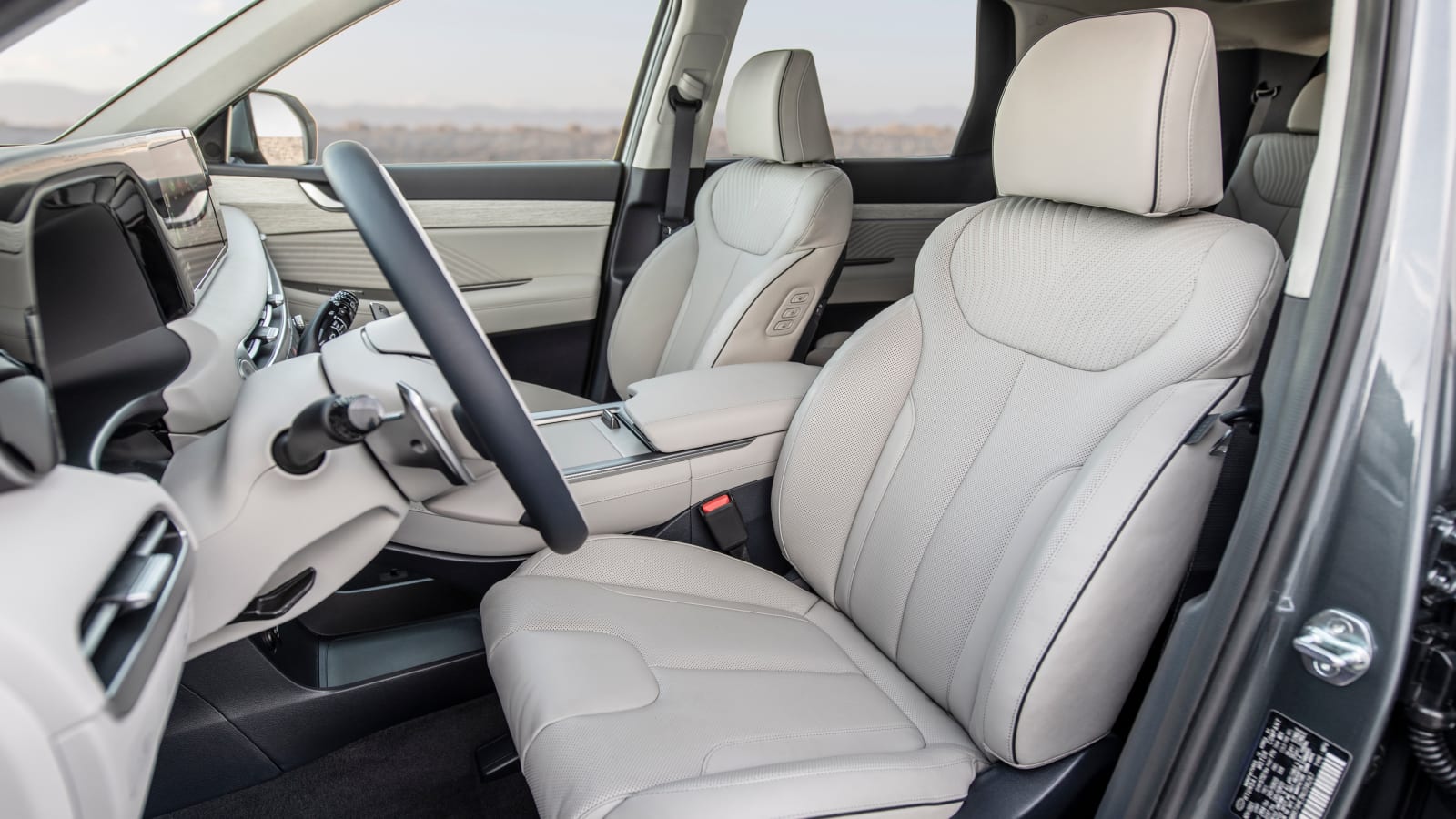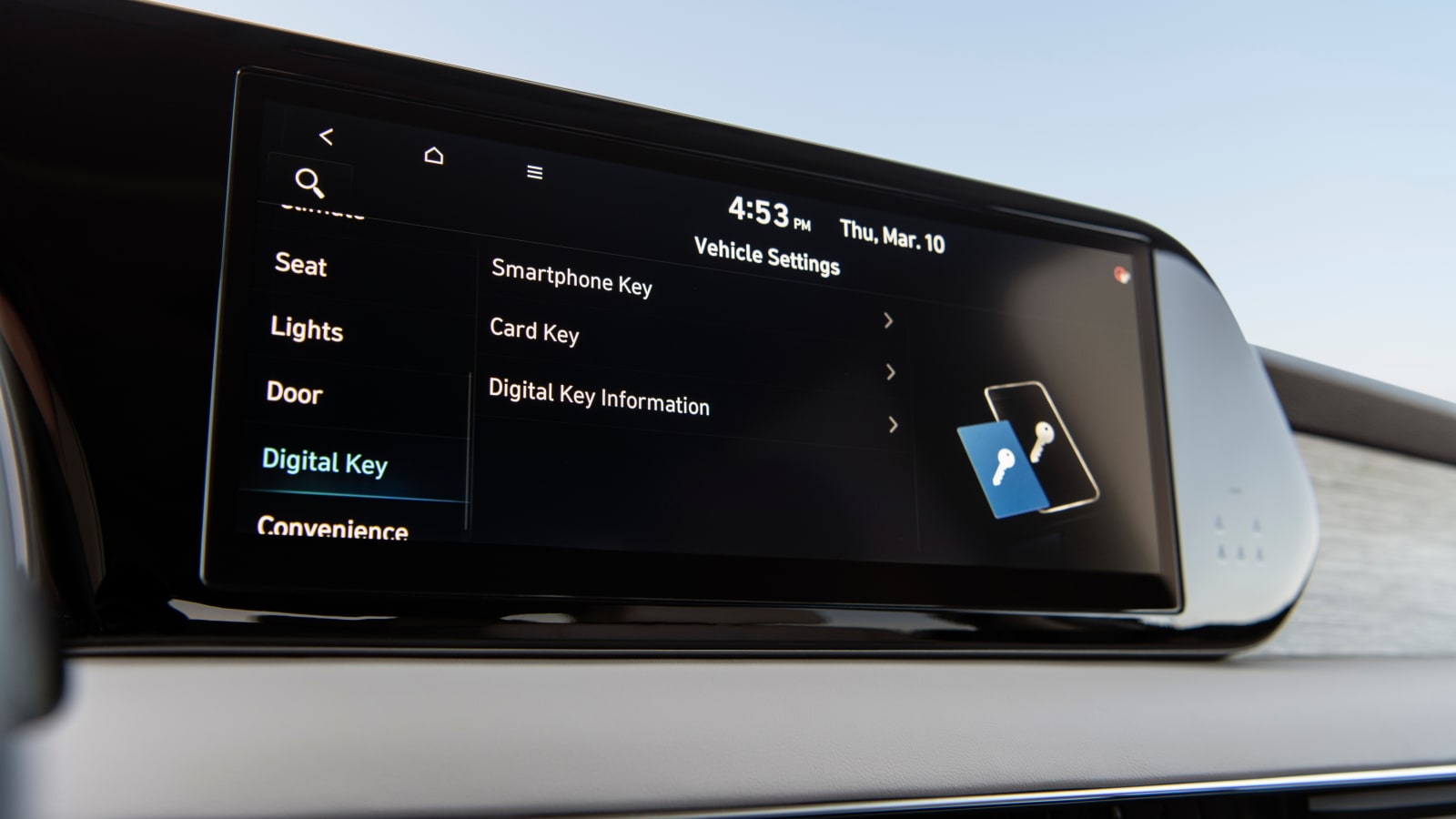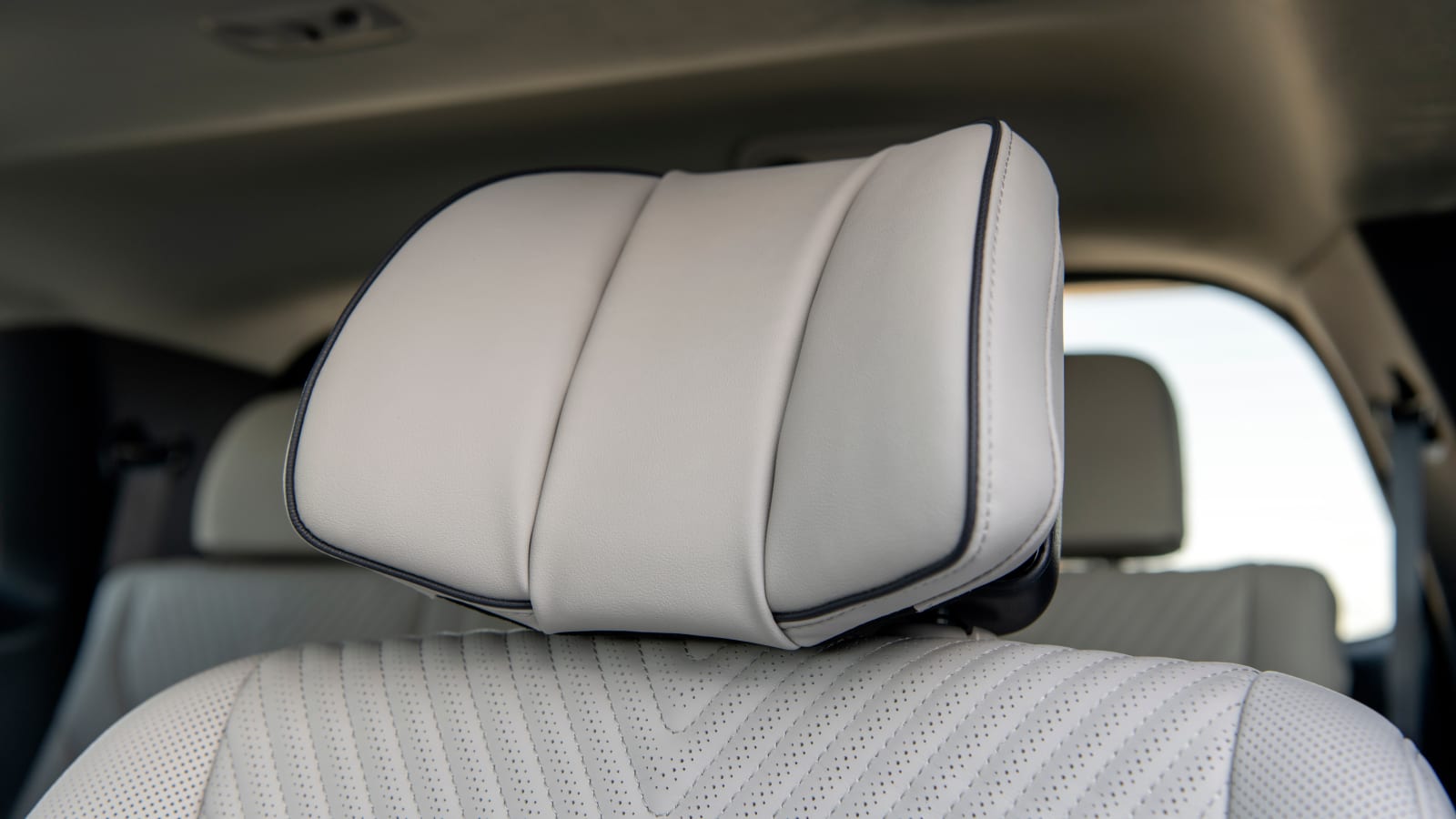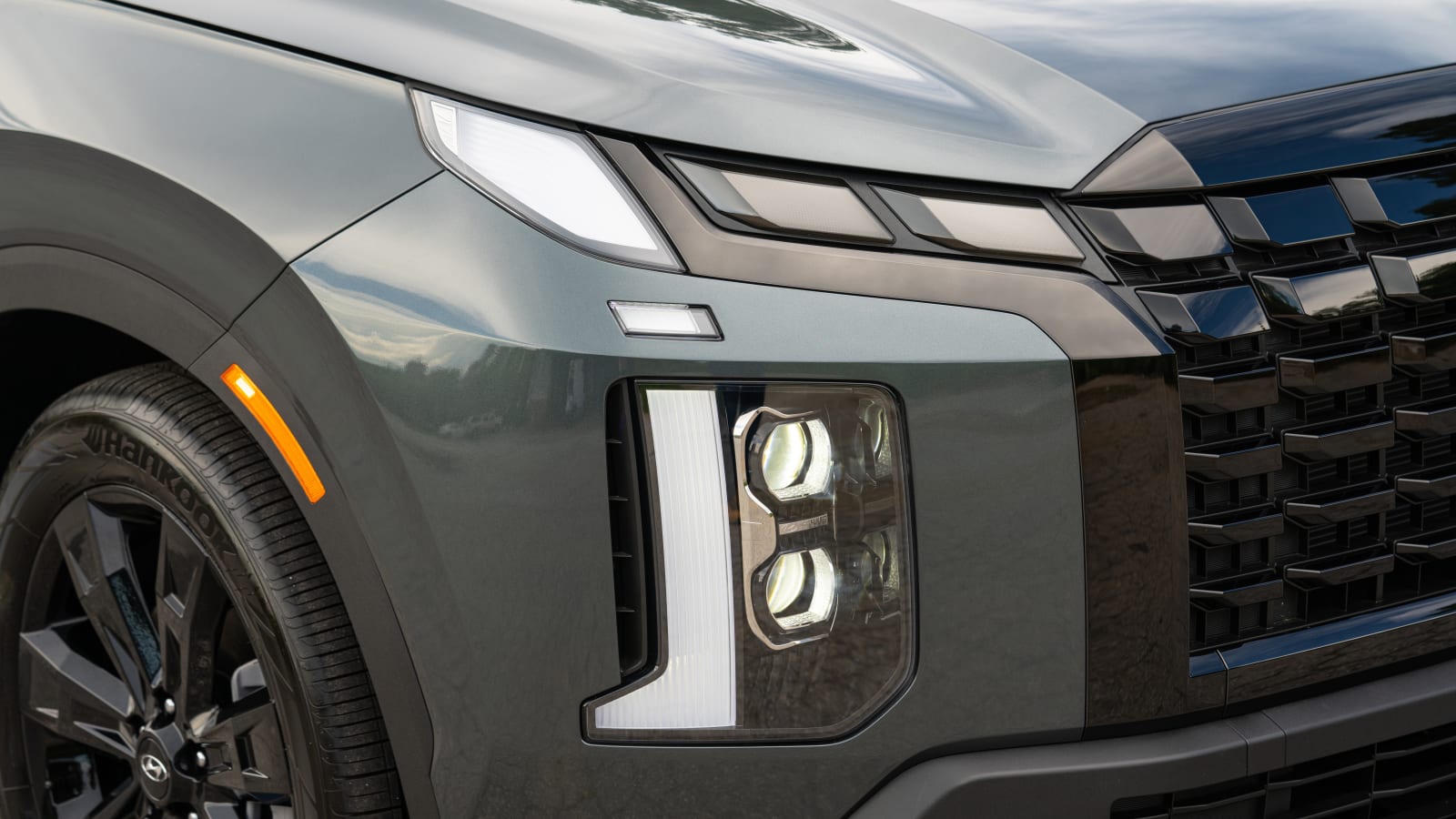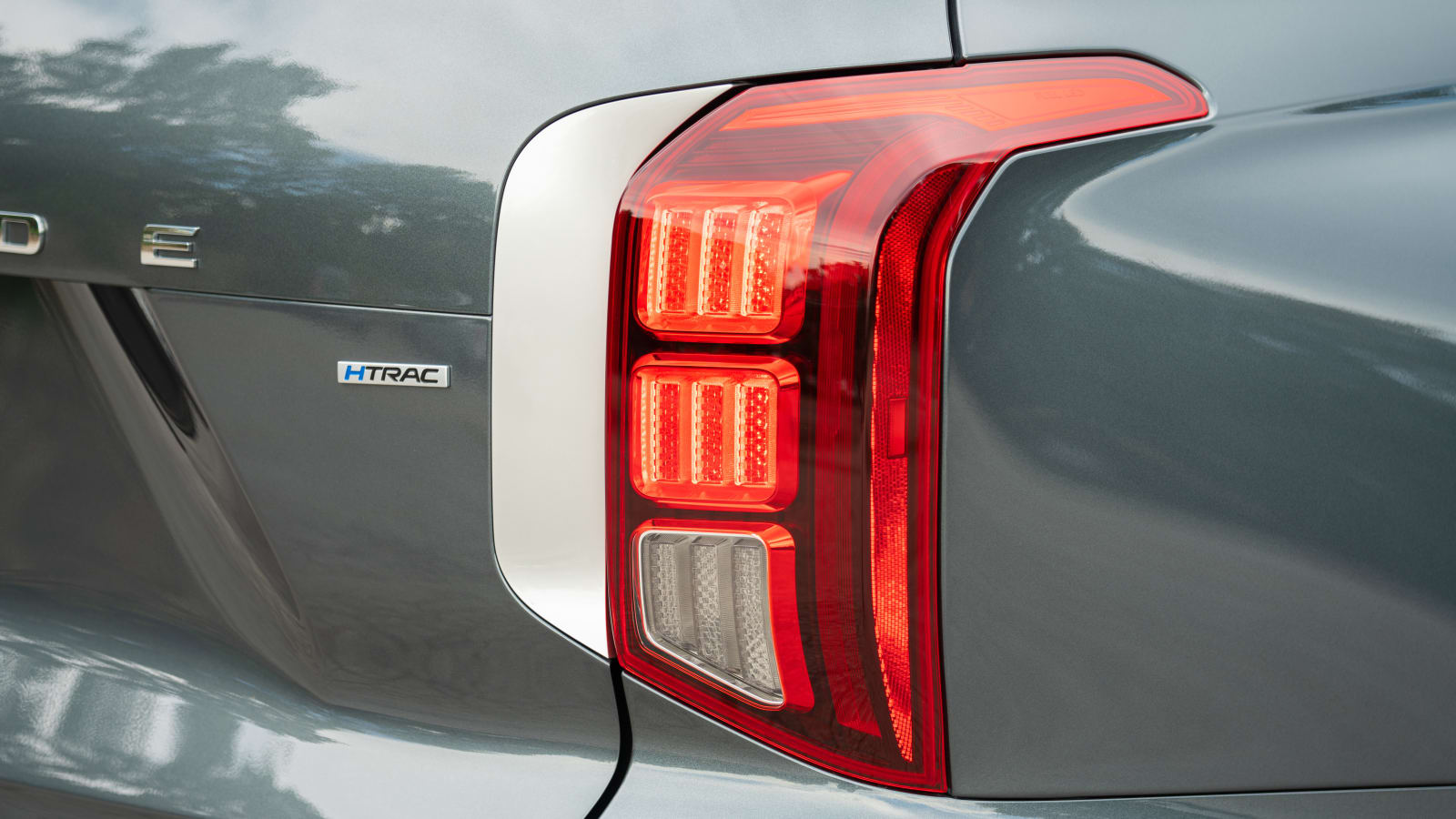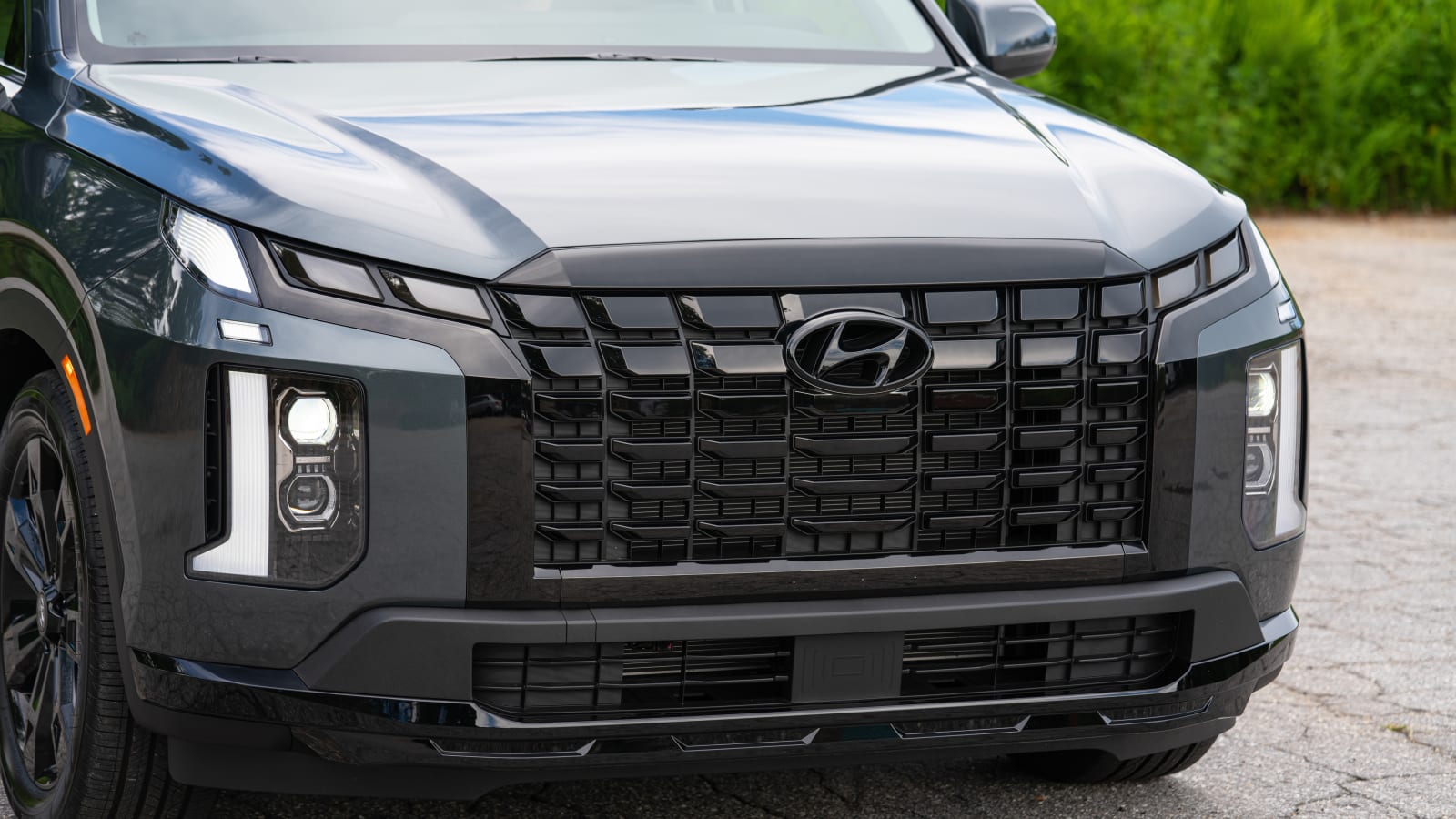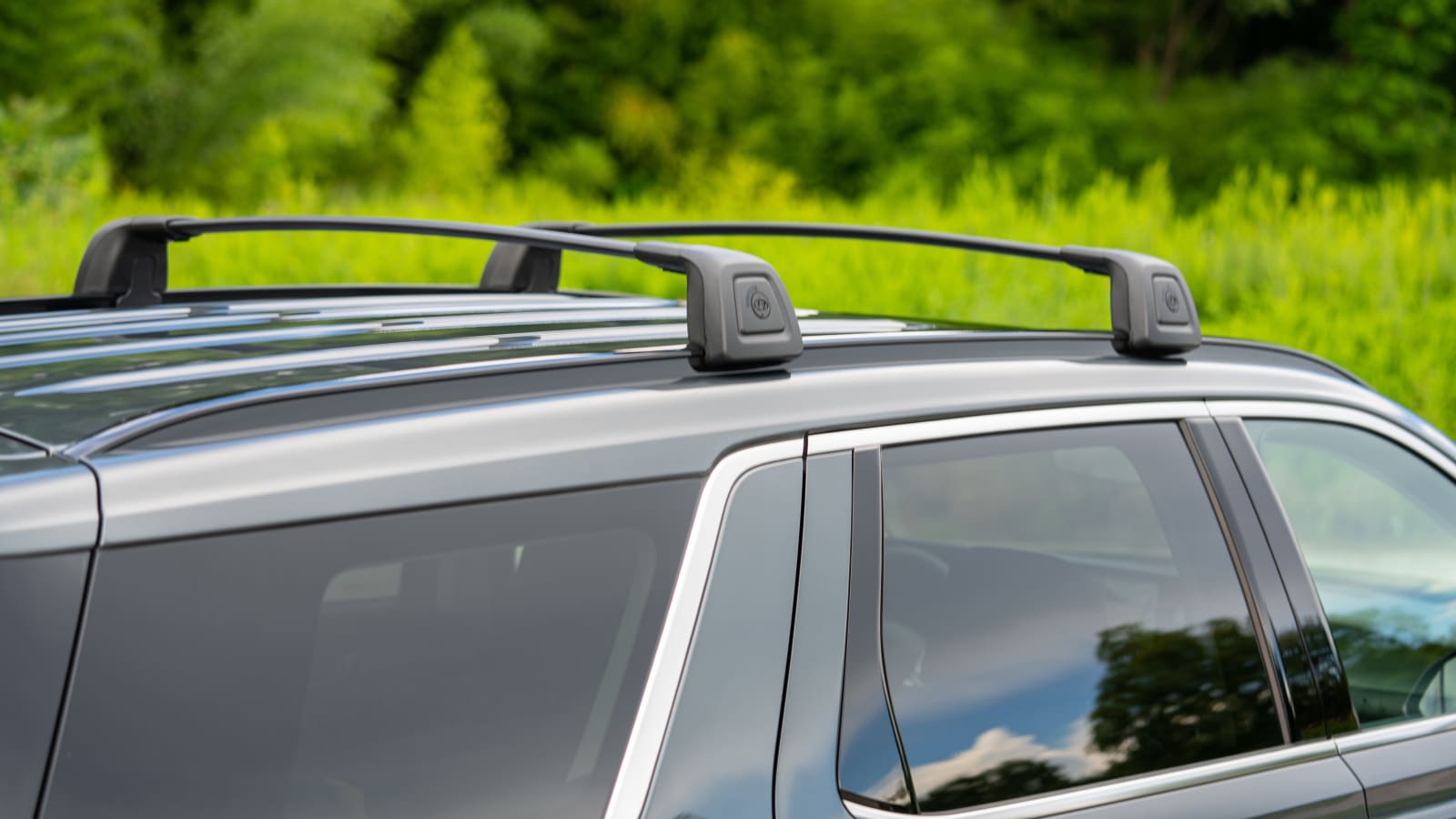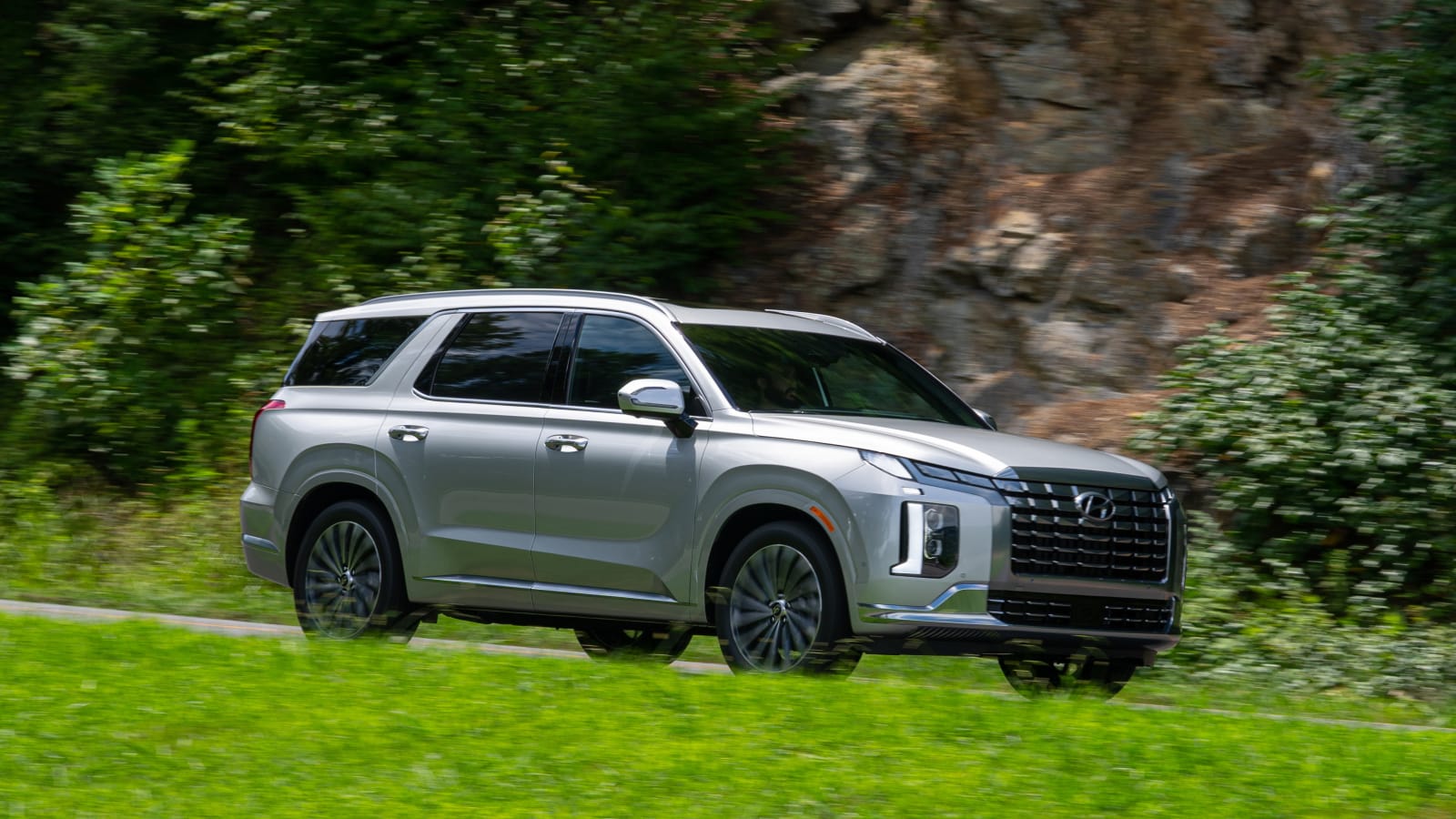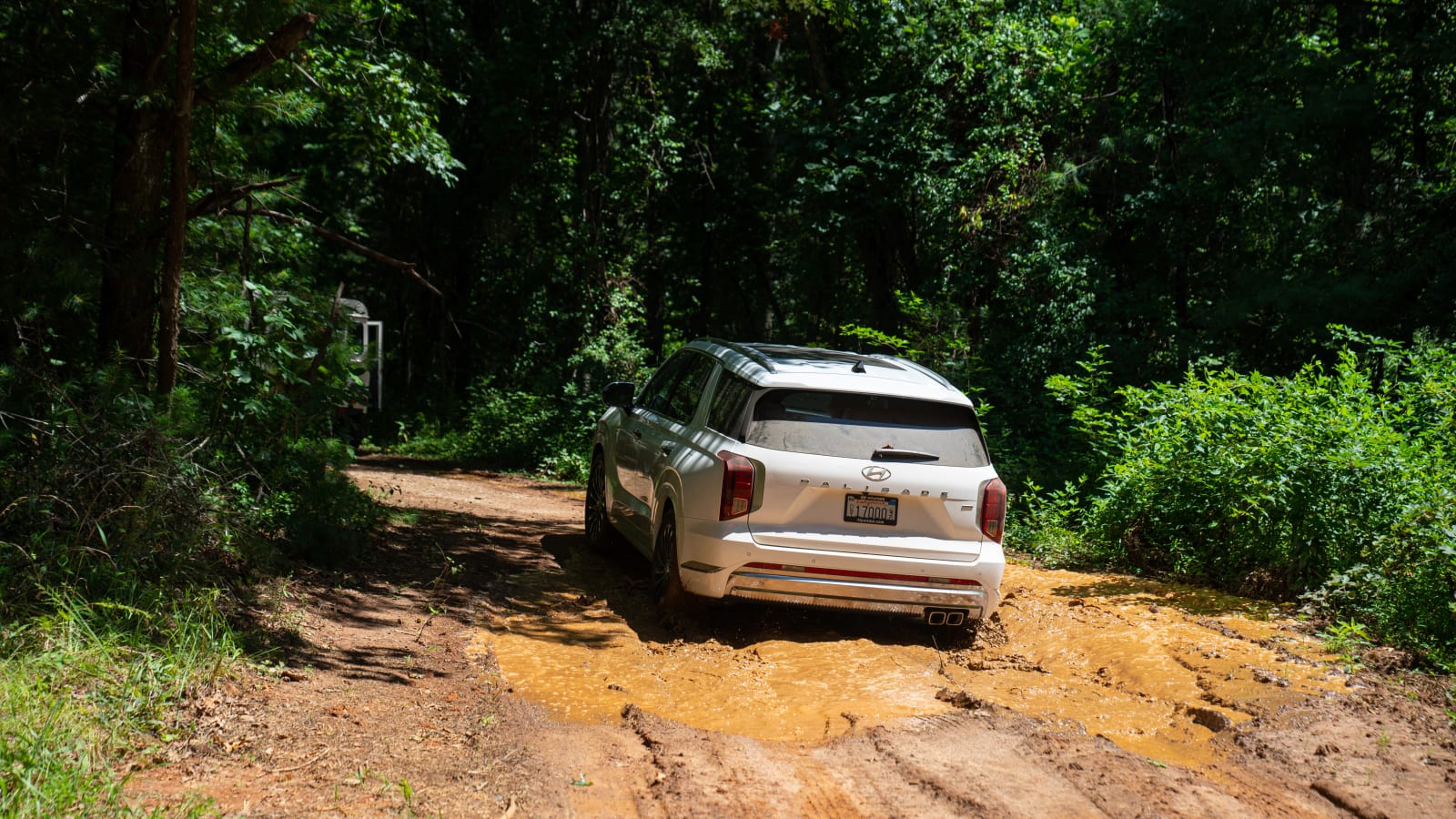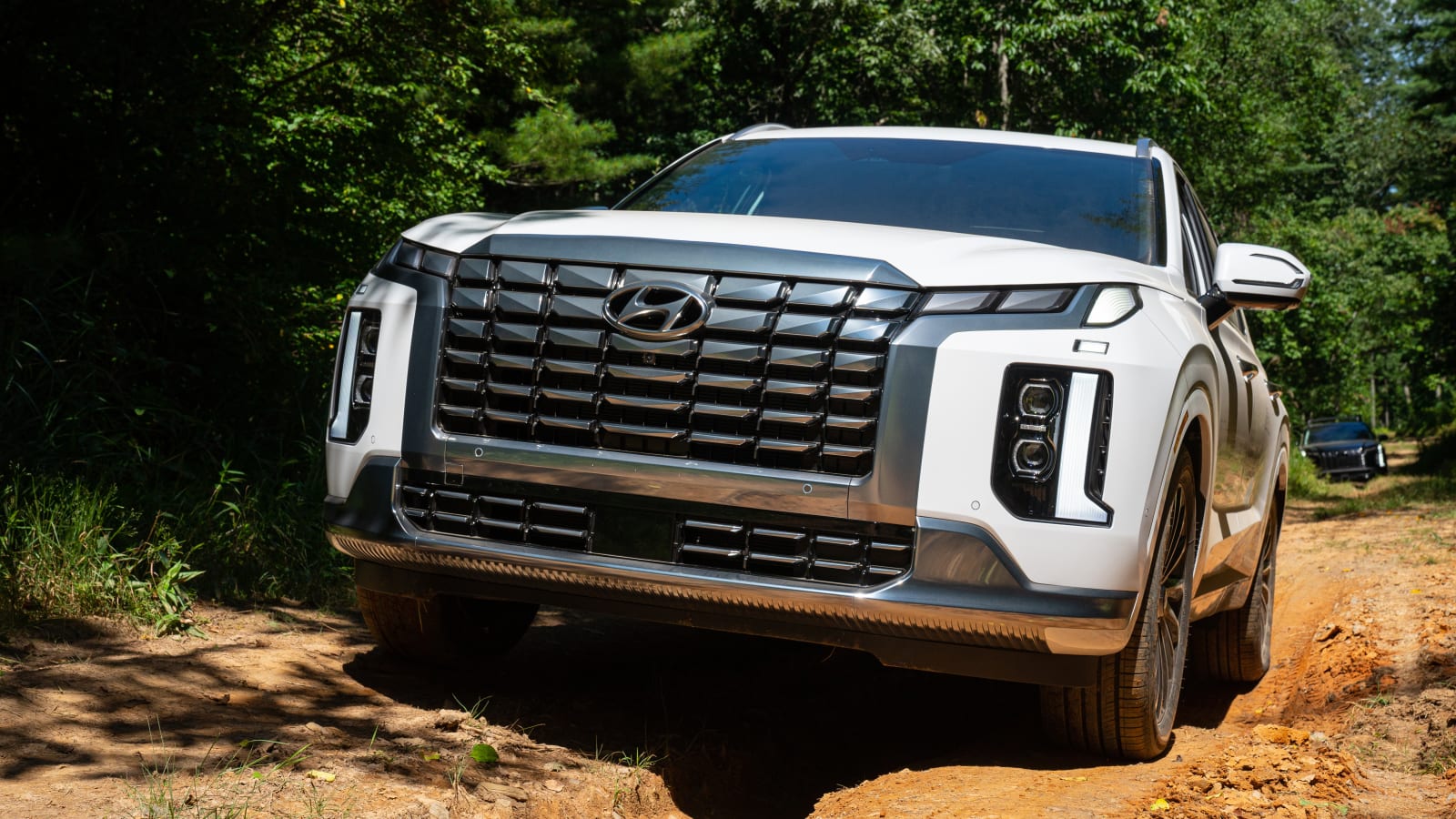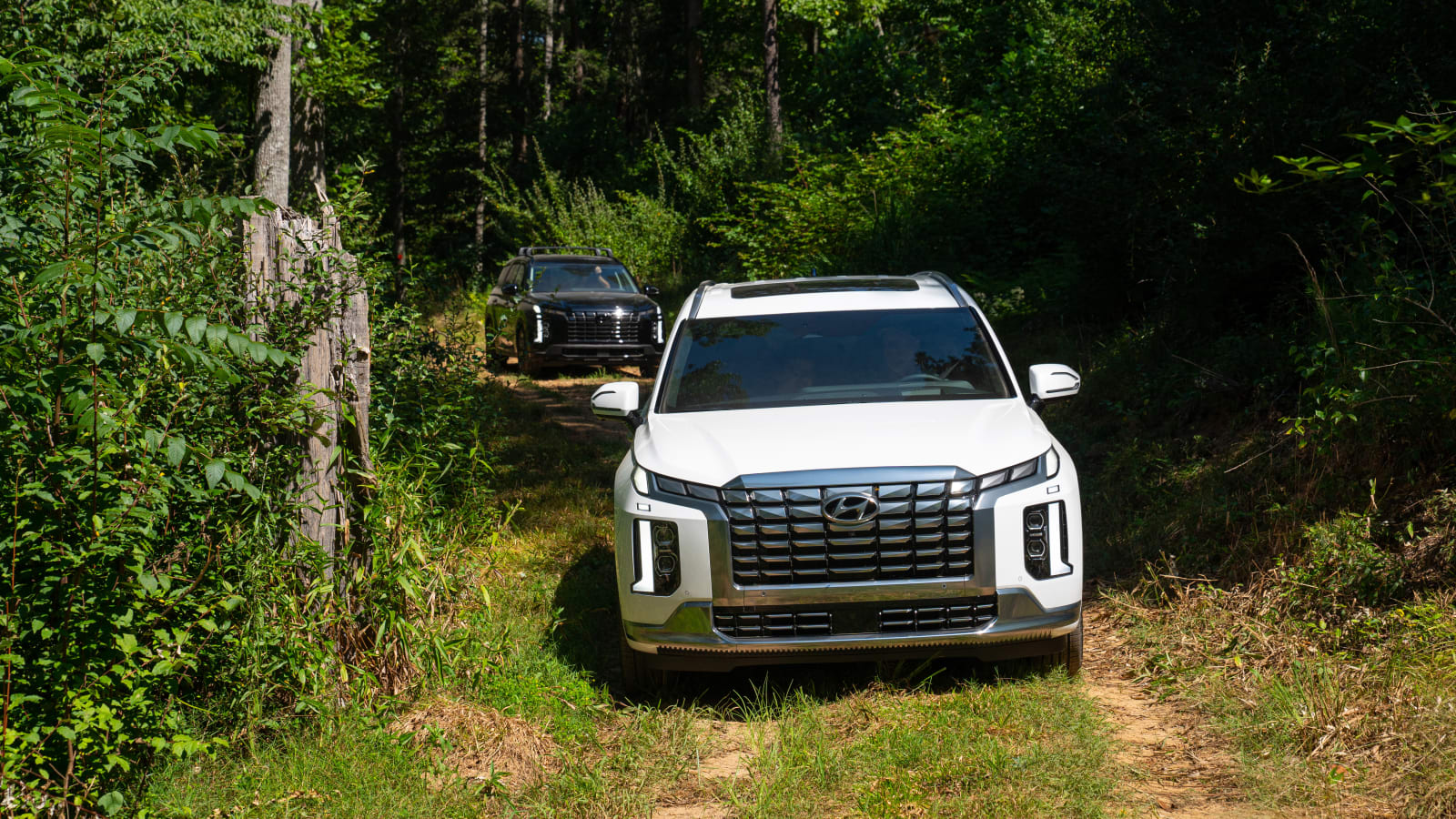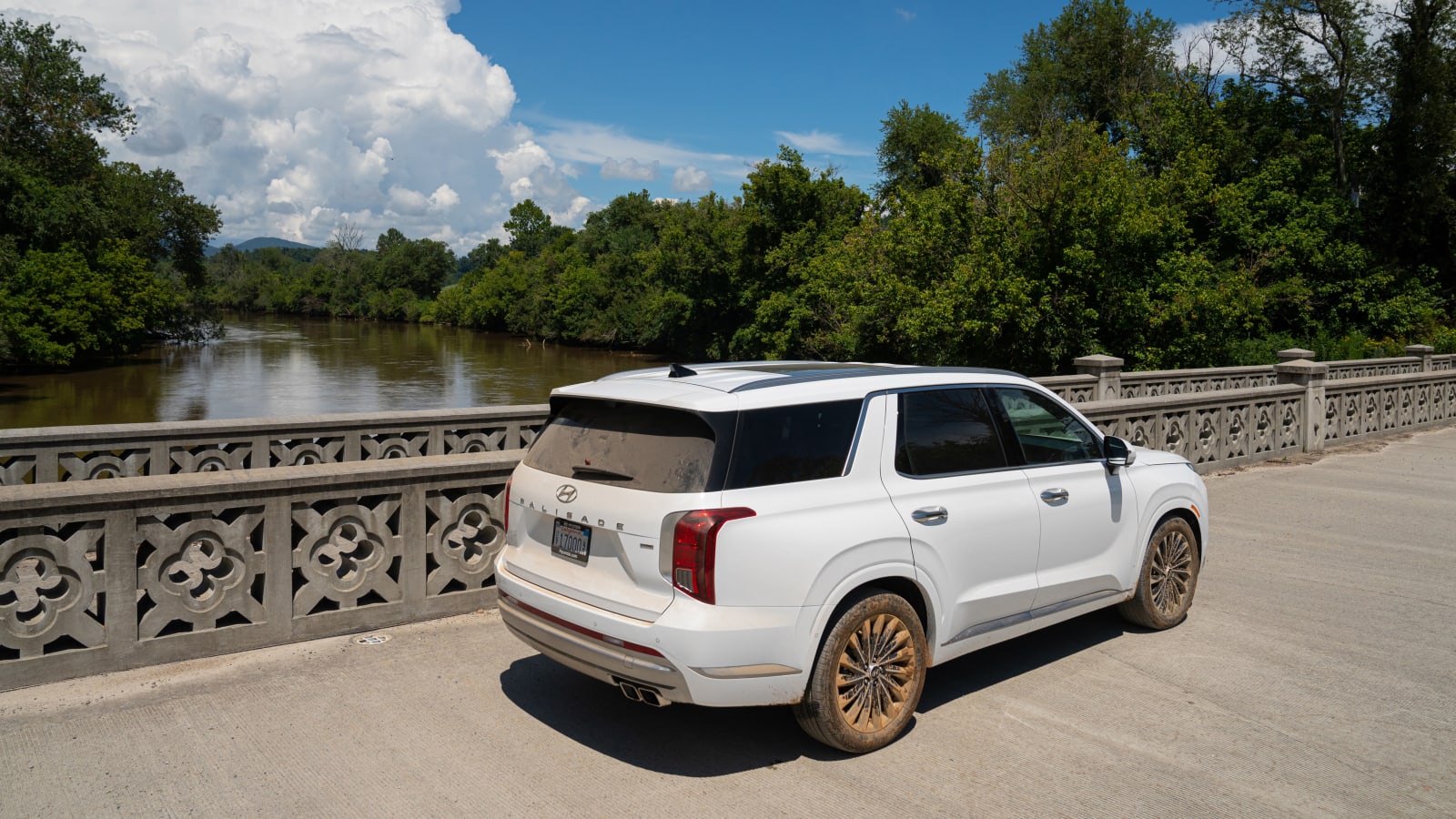ASHEVILLE, S.C. — The 2023 Hyundai Palisade isn’t the new kid in school anymore. It’s established, selling like gangbusters and still being lauded by everybody here at Autoblog — Senior Editor John Snyder even bought one last year. This 2023 refresh is a textbook example of what an update should look like for an already successful car. A long list of tiny tweaks and improvements make the Palisade that little bit better than before, and instantly noticeable styling changes ensure you know that you’re looking at the refreshed Palisade, not the old one.
Hyundai’s new beak is easily the most contentious or brow-furrowing revision on display here. The grille is larger than before, offers both a blacked-out or shiny look, and there’s a new horizontal shield right on the leading edge of the hood. It looks a little out of place, and it’s left some of us with the opinion that this refreshed Palisade actually looks worse than the original design. You’ll need to look closely to notice other changes, such as redesigned headlights, a new lower rear bumper and new wheels.
The new XRT trim is meant to appeal to folks wanting a Palisade that looks more rugged, but doesn’t actually improve off-road capability in any way. In person, it’s the most handsome of the redesigned Palisades. The blacked-out trim and grille makes the big SUV stand out more, in a good way, than any of the whole-model design changes do. The Limited trim snags the black grille, too.
Although the Tucson and Santa Fe offer hybrid and plug-in hybrid powertrains, the Palisade continues to offer only a 3.8-liter V6 with 291 horsepower and 262 pound-feet of torque. Just like before, front-wheel drive is standard on every trim, with all-wheel drive being an added cost option. The only new powertrain addition is a new Tow Mode that comes standard when you option all-wheel drive. Toss it into this setting, and the transmission will hold gears longer and reduce the frequency of shifts . Maximum towing is unaffected, though, as capacity is the same at 5,000 pounds.
Having spent thousands of miles in our long-term Palisade, it’s abundantly clear that this tweaked Palisade drives nearly identically to the old one. The only minor change noticed was the steering effort. It is both lighter and silkier in operation than before, partly thanks to Hyundai’s new frequency sensing valve that detect rough road impacts and aims to increase stability when the wheel might otherwise be knocked about in your hands. It wasn’t necessary to change anything with how the Palisade drove, though. The V6 has plenty of power for its size and the segment, and its ride and handling are just what we want from a big three-row SUV: comfy, sure-footed, low effort. Yes, the April Fool’s joke about a Palisade N would be awesome if it came true, but Hyundai won’t be doing any such thing.
Crawl inside the new Palisade, and while things seem familiar, there are a lot of notable updates. For starters, the dash gets a revised design that results in a side-to-side, horizontal air vent look. A new steering wheel with horizontal spokes and nicer buttons adds a flash of class. This is complimented by a larger, 12-inch infotainment system and enhanced digital instrument cluster running new software. We dig the crisp new cluster, and similarly enjoy the new digital climate control display in the center stack. The last new screen of note is a rearview camera mirror. It’s impossible to know how well this digital mirror will hold up to environmental conditions until we get our hands on it during a Michigan winter, as South Carolina only provided us with warm sunny conditions for our Palisade drive.
If you spring for the top shelf Calligraphy trim (what we drove), Hyundai tosses in a new “Ergo-Seat.” Essentially, it’s a massaging driver seat, and the massage is for both back and bottom. We’ve sat in this seat in Genesis models in the past, so it’s great to see the Palisade get some of that love here. Unfortunately, as in some of those Genesis cars, only the driver can get the Ergo-Seat, a fact best left unmentioned to your un-massaged passenger.
The luxurious seat improvements continue in the third row, as Hyundai added heated seats for the Calligraphy as standard, and includes them in an extra-cost package for the Limited trim. That’s a rare, upper-crust luxury SUV feature. Even the second row gets some attention, as the captain’s chairs get new winged headrests that you can curl in to provide a comfortable resting cradle for your head while sleeping. The armrests are improved with a greater amount of travel, too, in an effort to let you get more comfortable when in a fully reclined position.
The list of tech and convenience improvements continue, and some are sure to make current Palisade owners a little jealous. Hyundai’s Digital Key 2 steps in for 2023, which allows you to use your phone as a key, assuming you have either an iPhone or Samsung device — sorry, other Android users. In addition to a traditional key fob, Hyundai is giving folks an NFC-enabled “key” card, too, similar to the one you get with Teslas. A WiFi hotspot is available for the first time, if you pay a monthly fee. The wireless phone charger (where you set your phone to turn the vehicle on using the Digital Key function) is improved with faster charging. The BlueLink app for the Palisade gets an update with greater control and functionality. Plus, a number of USB-A ports are replaced with quicker-charging USB-C ports throughout the cabin.
Both side mirrors now feature auto-dimming to keep those bright headlights from blinding you — that’s one feature we would’ve loved on our long-term Palisade. Plus, the infamous “Smaht Pahk” remote parking feature is onboard. The last safety feature we’ll point out is the addition of rear side impact airbags as standard equipment that should further improve the Palisade’s safety for rear occupants.
Perhaps one, or a few, of those updates are a game changer for you, but they’re largely nice-to-haves in our book. All of the goodness of the Palisade pre-refresh remains, meaning that the cabin is easily one of the nicest in the segment — this is especially true for the top-level Calligraphy trim. And for the price, it frankly can’t be beat when it comes to tech and luxury features.
Having to choose between it and the Kia Telluride is still a difficult ballgame, as the Telluride is enhanced for 2023, too. If a little more off-road performance is what you’re after, the XRT trim might look the part, but it won’t do any better off-road than the other trims. As evidence of this, Hyundai took us through some trails with a little mud and the occasional small whoop, but we did so in Calligraphy models, not XRTs. The faux skid plates and black trim is just for show, but at least the standard roof cross bars will make sticking items up top a seamless experience. Kia offers true off-road enhancements with the Telluride X-Pro, so direct your attention there if you’re after something with better off-road performance (or a Jeep Grand Cherokee L).
All of these updates result in a small price increase to the various trims, but not cripplingly so. A base model starts at $36,245 ($1,420 more than last year), while the top-of-the-line Calligraphy stickers for $50,195. Adding all-wheel drive with the new tow mode is another $1,900. We’re left to conclude that the Palisade is a notably improved family transport device, and for the time being, there’s no bumping it from the podium as one of the best three-row SUVs.
Related video:


